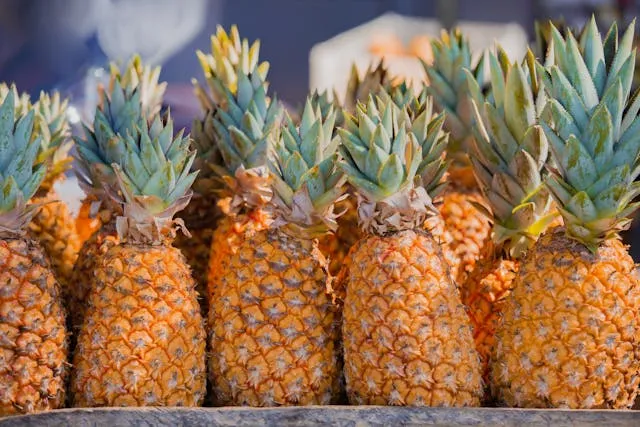Climate Challenges in Fruit and Vegetable Sector: Adapting for Future

Fruits and vegetables are the heart of a healthy diet. But growing them is getting harder. Climate change is making seasons unpredictable, and farmers around the world are feeling the impact.
A farmer who once knew exactly when to plant now faces heat waves, sudden storms, or long dry spells. Even our favorite foods, like peach puree dessert recipes and fresh summer fruit, rely on consistent weather. If crops suffer, the whole food chain feels it.
Let’s look at what’s happening to fruit and vegetable production and how growers are finding smart ways to adapt.
Also Read: Explore Restaurants in Chennai for an Unforgettable Experience
How Is Climate Change Affecting Crops?
Weather patterns are shifting, and plants are sensitive to even small changes. Higher temperatures, irregular rain, and stronger storms can hurt yields and quality.
This implies that certain fruits and vegetables that were once grown in particular places might no longer be appropriate for them. Farmers might have to switch crops or change how they grow them.
Common climate-related problems include:
- Heat stress that stops plants from flowering.
- Droughts that limit water for irrigation.
- Heavy rains that cause flooding and root damage.
- New pests and diseases moving into warmer areas.
Why the Fruit and Vegetable Sector Feel It More?
Fruit and vegetable crops are more sensitive than grains or other staple foods. They require very particular conditions and have shorter growing seasons.
For example, strawberries need cool nights to develop their flavor. Leafy greens wilt fast in extreme heat. The plant may produce fewer fruits if the weather changes even a little while it is flowering.
This makes climate change a bigger threat to the sector compared to crops that can handle more stress.
Farmers Are Finding Creative Solutions
The good news is that growers are not giving up. They’re testing new ways to keep production going, even in tricky weather.
Some are investing in better irrigation systems. Others are using greenhouses or shade covers to protect plants. Many are experimenting with new crop varieties that can handle more heat or less water.
Adaptation strategies include:
- Planting earlier or later to avoid extreme weather.
- Choosing heat-tolerant or drought-resistant seeds.
- Using water-saving drip irrigation.
- Building greenhouses for controlled environments.
Learning from Different Regions
Every region has its own challenges. In hot, dry areas, the focus is on saving water. In wetter regions, it’s about protecting crops from floods and mold.
Farmers use international programs and local networks to exchange knowledge. A grower in Spain might learn from a farmer in Australia about heat protection. A producer in Canada might share tips on extending the growing season with tunnels or covers. This exchange of ideas helps farmers prepare for the future.
How Is Technology Changing the Game?
Farming today isn’t just about soil and seeds, it’s about data and tools. Technology is helping farmers make quick, smart decisions.
Weather apps and sensors can tell them exactly when to water. Drones can check crop health from above. Automated systems can adjust irrigation or shade in real time.
Farmers use technology to protect crops from abrupt climate changes, save money, and reduce waste.
Protecting Yields Through Diversification
Relying on one crop is risky when the weather is unpredictable. Many farmers are now growing different crops to spread that risk.
If one crop fails due to heat, another may still thrive. This not only secures income but also keeps markets supplied with a variety of produce.
Diversification also includes preserving surplus crops. You can make extra fruit into purees, jams, or juices to sell later. This ensures that nothing is wasted.
The Role of Consumers in Supporting Change
We as buyers have a role to play. Choosing seasonal produce, reducing food waste, and supporting local farms can make a big difference.
We can reduce pressure on farmers to grow certain crops all year round if we’re willing to try different fruits and vegetables depending on the weather and season.
Simple steps like buying locally grown produce or storing food correctly can help support the entire supply chain.
Challenges in the Fruit and Vegetable Sector
Adapting to climate change isn’t easy or cheap. Many farmers need financial support to invest in new systems or seeds. Training is also essential so they can use new tools effectively.
There’s also the challenge of policy. Programs that promote climate adaptation and sustainable farming must be developed by governments.
Long-term change will be more difficult to accomplish if farmers, companies, and legislators do not work together.
Future in the Fruit and Vegetable Sector
The fruit and vegetable sector will keep facing challenges as the climate shifts. But with innovation, teamwork, and a willingness to adapt, there is hope.
Farmers are adopting technology, sharing knowledge, and figuring out how to safeguard their crops. We as consumers can help by making mindful choices and supporting sustainable farming.
Final Thoughts
Climate change is real, and it’s already reshaping the way we grow our food. The good news is that solutions are within reach. Farmers worldwide are showing that with creativity and resilience, they can adapt to new realities.
The next time you enjoy fresh produce or a recipe made from seasonal fruit; even something like peach puree dessert recipes, remember the hard work and smart planning behind it. By supporting these efforts, we help secure the future of our food.






